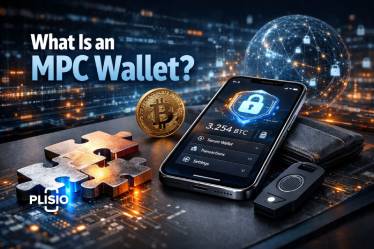What Is Mantle Network (MNT)?

Have you ever heard of something called "Mantle Network"? Well, it's a new player in the world of crypto that's making quite a buzz as a Layer 2 scaling solution for Ethereum. On July 17, 2023, Mantle officially launched its mainnet, entering the blockchain ecosystem with impressive throughput. Since then, it has processed over 30 million transactions and currently supports more than 650,000 daily active users (as of Q2 2025).
Before this big moment, the Mantle team conducted a six-month test phase to ensure robust performance. They simulated over 14 million transactions, deployed more than 140,000 smart contracts, and connected with over 690,000 crypto wallets. That's a serious commitment to data availability and scalability.
Security wasn’t taken lightly. External auditors combed through the system looking for bugs or potential fraud proofs. As a result, the Mantle Network launched smoothly and securely.
Their native token, $MNT, which replaced the former BIT token after governance approval via BIP-21 and MIP-22, has surged in popularity. As of May 2025, the MNT token is trading at $0.68 with a market cap of $2.3 billion and a 24-hour trading volume of $184.6 million. The token has a circulating supply of over 3.36 billion and a max supply of 6.21 billion.
Mantle Network by the Numbers (May 2025)
- Daily Active Users: 650,000+
- Total Transactions: Over 30 million
- TVL (Total Value Locked): $1.2 billion+
- TVL in Apps: $253 million
- MNT Token Price: $0.68
- Market Cap: $2.3 billion
- 24h Trading Volume: $184.6 million
- Circulating Supply: 3.36 billion MNT
- Max Supply: 6.21 billion MNT
- Secured by EigenDA: 163,000 mntETH (~$335M)
- Data Node Operators: 200+
- Throughput: Up to 15 MB/s
Now, you might wonder, what exactly is Mantle? Imagine Ethereum as a busy highway. Mantle Network is the express lane built on top of Ethereum—an advanced solution that makes transactions faster and more efficient without clogging the base layer. It's designed as a modular, scalable, and decentralized infrastructure.
Mantle is special for its modular architecture. It fits right into the Ethereum ecosystem and supports seamless migration for dApps. It uses optimistic rollup technology to compress and batch transactions. A sequencer then organizes these batches and forwards them back to Ethereum, reducing gas fees and improving speed.
For storing on-chain data, Mantle uses EigenDA, a high-performance data availability layer created by EigenLayer. As of 2025, EigenDA supports throughput of up to 15 MB/s and is secured by over 163,000 mntETH (~$335 million), backed by more than 200 data availability node operators.
So, why is Mantle Network such a big deal in the Ethereum Layer 2 landscape? Think of Ethereum as a packed airport. Mantle is building new runways to enhance throughput. It allows more flights (transactions) to land and take off efficiently without delays—solving key issues in scalability.
And with massive backing from BitDAO—over $2.1 billion worth—Mantle has a strong financial runway to build an entire ecosystem of innovative applications. Currently, the total value locked (TVL) in Mantle-based apps exceeds $253 million, demonstrating strong developer and user adoption.

Overview of Mantle Network
If you've been stuck in Ethereum's high gas fee traffic, you know how frustrating blockchain congestion can be. Mantle Network offers a layer 2 scaling solution, like an express lane for the Ethereum highway, easing transaction loads and enhancing overall throughput.
Layer 2 solutions, like Mantle, are built on top of Ethereum to offload and optimize processing. They are essential to achieving scalability while preserving decentralization and security—the holy trinity known as the blockchain trilemma.
Backed by BitDAO, Mantle is not just a theoretical solution. It comes with major financial power and governance oversight from its DAO. It uses optimistic rollups to combine multiple transactions into efficient packages, making it easier for the network to process them.
Mantle's modular design means it can evolve without disrupting users or developers. Everything remains compatible with Ethereum’s ecosystem, including the Ethereum Virtual Machine (EVM), allowing seamless use of existing tools and smart contracts.
This scalability doesn’t come at the cost of decentralization. Mantle achieves high throughput with reduced transaction fees and low latency, making it an attractive option for crypto developers and end-users alike.
BitDAO has further committed $200 million to expand Mantle's ecosystem. That’s a strong bet on its future as a robust and scalable solution for Ethereum.
How Does Mantle Work?
The secret to Mantle's success lies in its modular architecture and cutting-edge technology stack. EigenDA, developed by EigenLayer, is key for data availability, ensuring reliable and secure access to blockchain data.
Staking plays a big role too. Anyone holding the MNT token—the native token of the Mantle network—can stake it to help secure the ecosystem and earn rewards. This DAO-driven model helps decentralize the governance of the network.
Mantle uses the Ethereum Virtual Machine to verify on-chain computations. This compatibility layer ensures that fraud proofs and smart contracts work just like they do on Ethereum.
Here’s what a typical transaction looks like: a user sends a request via a crypto wallet, Mantle batches it with others using optimistic rollup technology, and then forwards the data to Ethereum. This process is highly efficient and cuts down gas fees dramatically.
The network of nodes within Mantle signs off on each batch using secure cryptographic methods. In return, node operators earn MNT tokens, incentivizing their work and supporting decentralization.
Interoperability is key. Mantle builds digital bridges to connect its system with Ethereum and potentially other blockchains. This interoperability allows seamless token swaps and enhances ecosystem connectivity.
MNT Token
The MNT token is more than just a currency—it’s the backbone of Mantle’s governance and ecosystem. Formerly known as BIT, it was rebranded following a DAO-led proposal. This 1:1 token migration enabled new utilities for the MNT token, including minting, protocol upgrades, and staking.
MNT holders influence Mantle's development through decentralized governance, voting on key protocol upgrades and proposals. This mirrors systems seen with other Layer 2 tokens like OP and ARB.
Besides governance, MNT is also the native token for paying transaction fees within the Mantle Network. It can even be swapped automatically for ETH, allowing users to enjoy a smoother transaction experience.
Future features in the works include dual-token staking models and the introduction of mntETH, a potential restaking-enabled LSD token. These advancements would integrate Mantle further into the broader Ethereum and Eigenlayer staking ecosystems.
All major changes to the MNT token must go through community governance, ensuring the ecosystem evolves transparently and democratically.
Pros and Cons
Pros:
- Scalability: Mantle dramatically boosts Ethereum’s throughput using optimistic rollup technology and a modular architecture.
- Lower Gas Fees: By batching transactions, Mantle significantly reduces transaction fees for users.
- Modular Design: Flexible and upgradeable infrastructure built on top of Ethereum.
- Strong Backing: Financial support from BitDAO ensures a long-term development roadmap.
- EVM Compatibility: Supports existing smart contracts and dApps without any modifications.
- Decentralized Governance: DAO-led decision-making gives the community real power.
- Advanced Data Availability: Leverages EigenDA for secure, high-performance on-chain data storage.
- Native Token Utility: MNT token supports governance, staking, and network fees.
Cons:
- Early Stage Risks: Still a relatively new mainnet; long-term performance is unproven.
- Complex Ecosystem: Modular systems and tokenomics can be hard for new users to understand.
- Competition: Faces stiff competition from other Layer 2 solutions like Arbitrum and Optimism.
- Governance Challenges: DAO-based models can be slow or inconsistent in decision-making.
- Bridging Risks: Interoperability requires secure bridge solutions, which are historically vulnerable.
Expert Opinions
Industry experts have taken notice of Mantle Network’s momentum in 2025:
“Mantle’s modular approach to scaling Ethereum is a textbook example of innovation driven by real-world demand. With EigenDA’s performance and DAO-led governance, it's no surprise Mantle is drawing serious attention.”
— Camila Russo, Founder of The Defiant
“We’re witnessing a shift toward purpose-built Layer 2 solutions, and Mantle’s architecture is clearly designed for high throughput and long-term composability. It’s one of the most well-funded and technically complete networks in the rollup space.”
— Liam Horne, CEO of Optimism Foundation
“Mantle isn’t just another scaling solution—it’s a potential blueprint for Ethereum’s future. EigenDA and mntETH restaking could redefine how Layer 2s interact with core infrastructure.”
— Ryan Watkins, Co-Founder of Syncracy Capital
Conclusion
Mantle Network is becoming a key solution for Ethereum’s scaling challenges. It offers a secure, fast, and cost-effective Layer 2 scaling solution using optimistic rollup technology, modular architecture, and native support for the Ethereum Virtual Machine.
With BitDAO’s backing, governance through a DAO model, and innovative features like EigenDA for data availability, Mantle is well-positioned to reshape the Layer 2 crypto landscape.
The integration of smart contracts, on-chain governance, reduced gas fees, and a robust native token economy makes Mantle one of the most comprehensive scaling solutions built on top of Ethereum.
Whether Mantle merges with other Layer 2 solutions or stands alone, its impact on the blockchain world is already being felt—and it’s only just begun.




